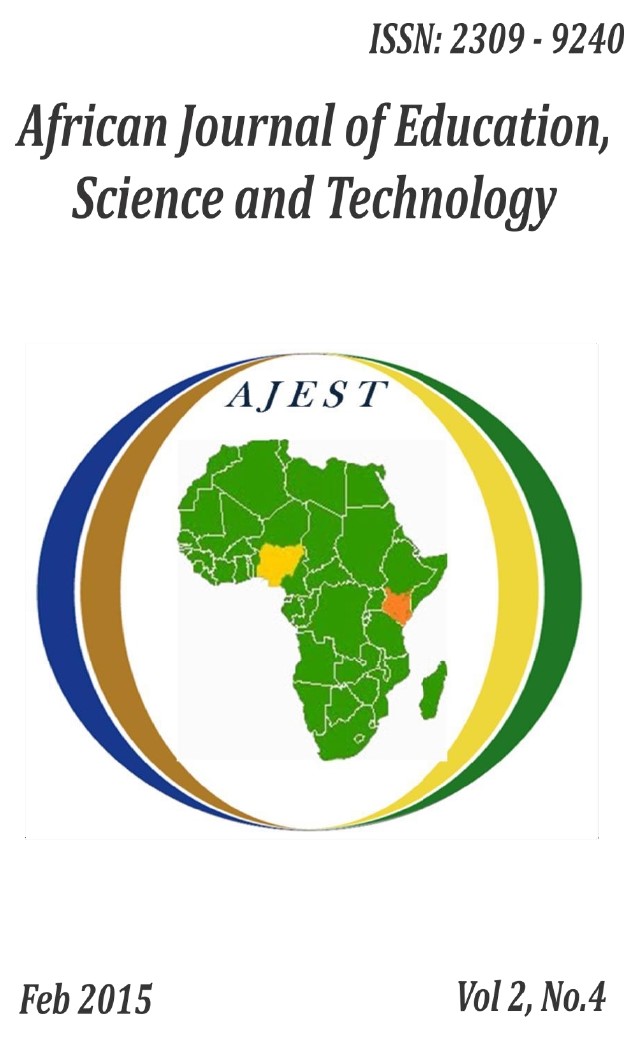Situational Conditions for Sports Tourism in Achieving Competitive Advantage in North Rift Region of Kenya
##article.abstract##
While there are many tourism products, sports tourism has increasingly become one of the most popular products. In order for any country to benefit from sports tourism, it needs to have the necessary conditions that can make the industry to flourish. Several authors cite several explanations including environmental factors, psychological advantage and favorable physiological characteristics, which may be genetically conferred or environmentally determined. This paper seeks to establish the situational conditions existing in the North Rift region that prompt sports tourism. The study adopted a descriptive survey design and was guided by the integrated model for destination competitiveness by Dwyer et al. (2004). Target population included all the athletics camps and the tourism facilities in Uasin Gishu and Nandi districts. Simple random sampling was used to select 25 athletics camps from which 50 athletics officials were selected using simple random sampling technique. One manager from each of the tourism firms was also selected for the study, making a total of 35 tourism firm managers. Primary data was collected by use of structured questionnaires, while secondary data was collected through critical examination of public or private recorded documents related to the study. Data was analyzed using techniques which included frequencies, means, modes, standard deviation and percentages. The region received a fair rating in terms of the general business environment and a good review in terms of political stability and tourists‘ safety and security. It is hoped that the findings of the study will be useful to tourism policy makers and other interested stakeholders in designing strategies and policies, as well as support them to make relevant decisions regarding the North Rift region sports tourism. It further seeks to highlight the competitive advantage of the region as a sports destination.
References
Buhalis, D. (2000). Marketing the Competitive Destination of the Future. Tourism Management 21, 97-116. Crotts, J. (1996). Theoretical Perspectives on Tourist Criminal Victimisation. Journal of Tourism Studies 7
Crouch, G. I., & Ritchie, J. R. B. (1999). Tourism, Competitiveness, and Societal Prosperity. Journal of Business Research, 44(3), 137-152.
David, F. (2001). Strategic Management Concepts (8thed). Upper Saddle River, NJ: Prentice Hall.
Dwyer, L., & Kim, C. (2003). Destination Competitiveness: Determinants and indicators. Current Issues in Tourism, 6(5), 369-414.
Dwyer, L. Forsyth, P., & Rao, P. (2000). Price Competitiveness of Tourism Package to Australia: Beyond the Big Magic Index. Asia Pacific Journal of Tourism Research (4), 22-34
Dwyer, L. Mellor, R. Livaic, Z. Edwards, D., & Kim, C. (2004). Attributes of Destination Competitiveness: A Factor Analysis. Tourism Management, 25(4): 177-188.
Dwyer, L., Forsyth, P., & Rao, P. (2002). ‗Destination Price Competitiveness: Exchange Rate Changes versus Domestic Inflation‘ Journal of Travel Research, 40(Feb), 328-336.
Dwyer, L., Forsyth, P. & Rao, P. (1999). Tourism Price Competitiveness and Journey Purpose. Turizam 47 (4), 283–99. Special issue on Competitiveness in Tourism and Hospitality.
Evans, N. Campbell, D., & Stonehouse, G. (2003). Strategic Management for Travel and Tourism. Oxford: Butterworth-Heinemann.
Ford, R., & Richardson, W. (1994) Ethical decision making: A review of the empirical literature. Journal of Business Ethics 13 (3).
Go, F., & Govers, R. (1999). The Asian perspective: Which international conference destinations in Asia are the most competitive? Journal of Convention & Exhibition Management 1 (4).
Hassan, S. S. (2000). Determinants of Market Competitiveness in an Environmentally Sustainable Tourism Industry. Journal of Travel Research, 38(3), 239-245.
Heath, E. (2003). Towards a model to enhance destination competitiveness: A Southern African perspective. Proceedings of CAUTHE 2003 National Research Conference, Coffs Harbour, Australia, February 5-8, 2003.
Johnson, G., & Scholes, K. (2001) Exploring Corporate Strategy. Hemel Hempstead: Prentice Hall. Kelly, J. (1978). Situational and social factors in leisure decisions.Pacific SociologicalReview 21, 313–30.
Kemp, S., & Dwyer, L. (2001). An examination of organisational culture – the Regent Hotel, Sydney.
International Journal of Hospitality Management .
Kotler P., Bowen, J., & Makens, J. (1996). Marketing for Hospitality and Tourism. Upper Saddle River: Prentice Hall.
Lewis, J. (1990). Partnerships for Profit: Structuring and Managing Strategic Alliances. NewYork: Free Press. McGee, J.S. (1988). Industrial Organisation. Englewood Cliffs, NJ: Prentice Hall.
McKercher, B. (1998). The effect of market access on destination choice. Journal of Travel Research
Murphy, P., Pritchard, M. P., & Smoth, B. (2000). The Destination Product and its Impact on Traveller Perceptions. Tourism Management 32(2), 116-124.
Pechlaner, H. (1999). The competitiveness ofAlpine destinations between market pressure and problems of adaptation.Turizam 47 (4), 332–43. Specialissue oncompetitiveness in tourism and hospitality
Pitsiladis, Y.P., Onywera, V.O., Geogiades, E., O'Connell, W., & Boit, M.K. (2004). The dominance of Kenyans in distance running. Equine and Comparative Exercise Physiology. Equine and Comparative Exercise Physiology 1(4).
Poon, A. (1993). Tourism, Technology and Competitive Strategies. Wallingford, Oxon, UK: CABI Publishers. Porter, M. E. (1980). Competitive Strategy: Techniques for Analyzing Industries and Competitors. New York:
The Free Press.
Porter, M. E. (1990). The Competitive Advantage of Nations. New York: The Free Press.
Porter, M., Sachs, J. & McArthur, J. (2001). Executive summary: Competitiveness and stages of economic development. In World Economic Forum The Global Competitiveness Report 2001–2002.
Ritchie, J.B.R., Crouch, G., & Hudson, S. (2000). Developing Operational Measures for the Components of a Destination Competitiveness/Sustainability Model: Consumer Versus Managerial Perspectives, Unpublished.
Sinclair, T., & Stabler, M. (1997). The Economics of Tourism. London: Routledge.
Tribe, J. (1999). The Economics of Leisure and Tourism. Oxford: Butterworth-Heinemann.


